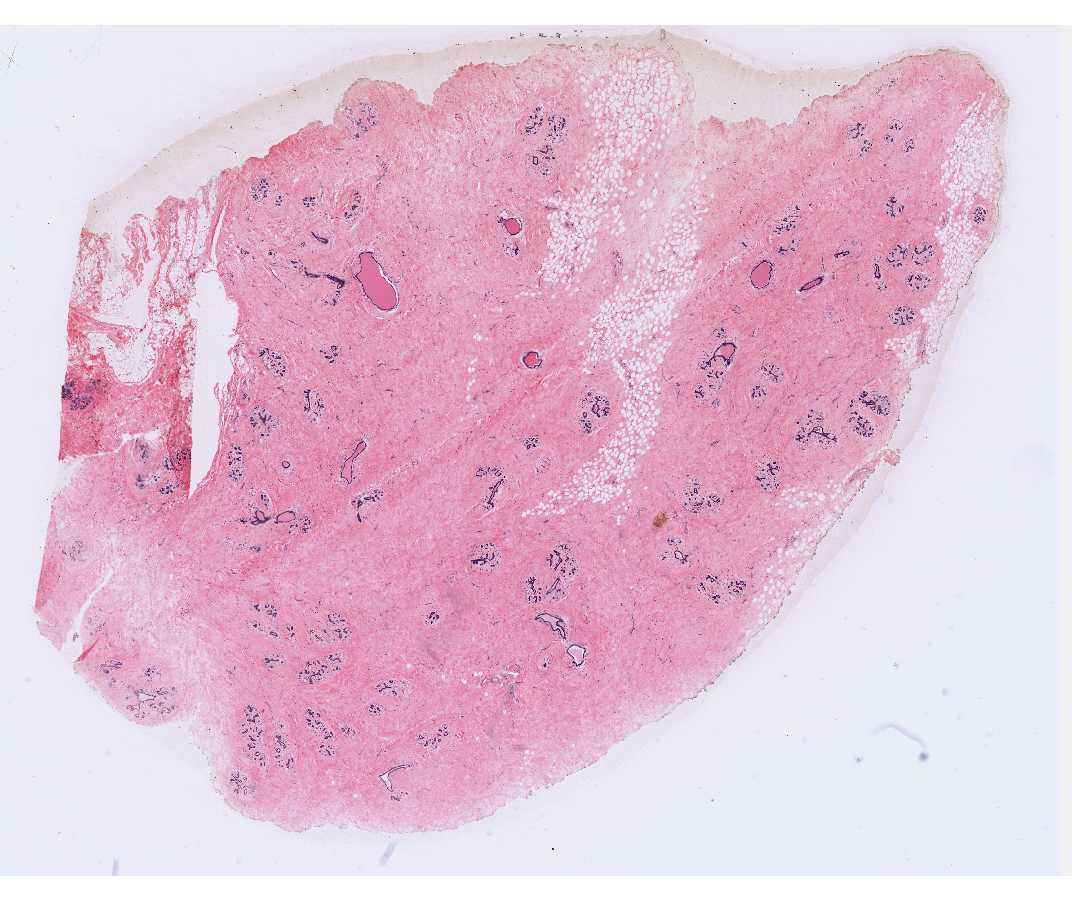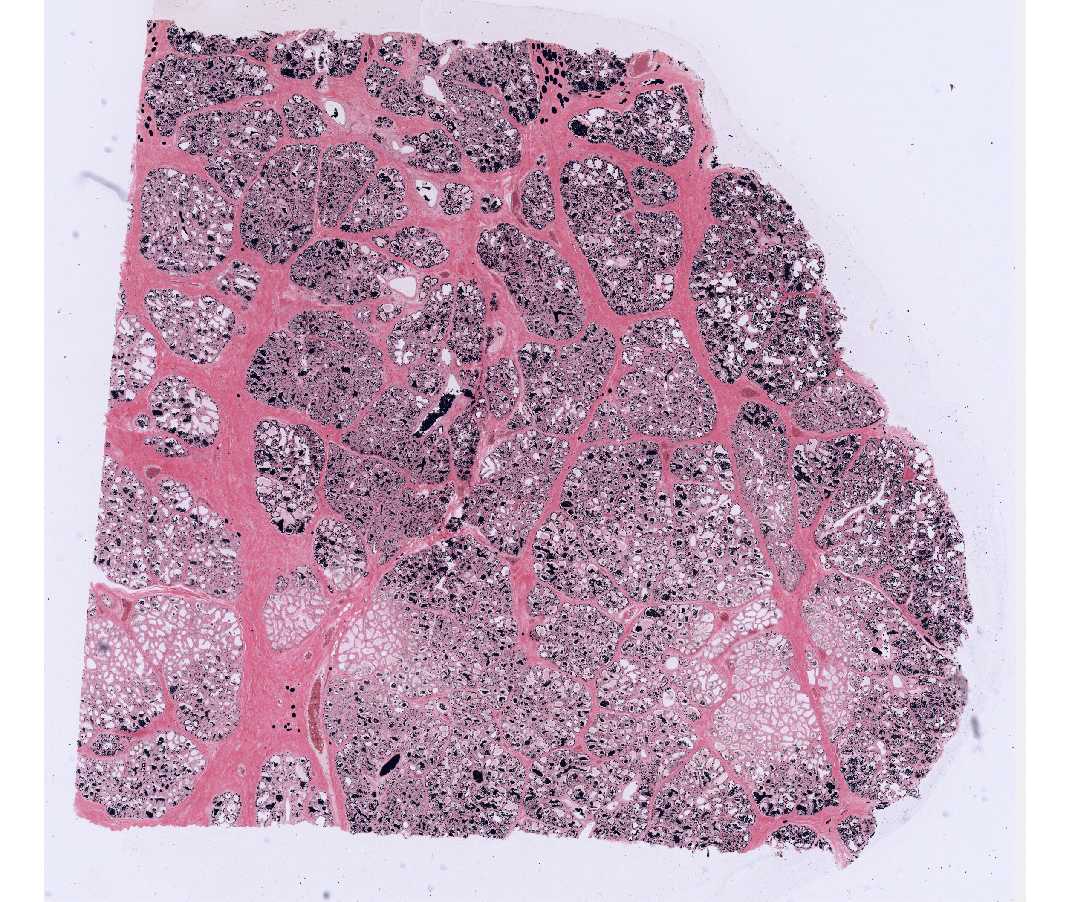SBPMD Histology Laboratory Manual
Mammary Gland
The mammary gland is a cyclic organ, varying in size and structure in response to hormones from the adrenal, ovary and pituitary. The two slides in your collection represent two of the extremes normally encountered. You should realize that this gland is normally subject to a great deal of variation.
#70 Mammary gland, Post-menopausal, Human (H&E)
Open with WebViewer
Examine this slide with the naked eye. The parenchyma (glandular component) can be recognized as small regions with hematoxylin staining (nuclei of ductal cells). These are scattered in the abundant dense connective tissue stroma (pink). Under the scanning objective note the loose connective tissue immediately surrounding the clumps of ducts. Occasional lobules of alveoli may be found as well as cystic ducts.
The mammary gland in the prepubertal female has a similar appearance. That is, there is abundant connective tissue in which is embedded lactiferous ducts, but there are no secretory alveoli.
#69 Mammary gland, Lactating, Human (Osmium fixation)
Open with WebViewer
Unsaturated lipid in the apical cytoplasm of the alveolar cells and in the milk in the lumina is stained black by reduced osmium tetroxide. Osmium penetrates very poorly and thus, the tissue is well stained only at the periphery of the section. The gland is separated into lobules by dense connective tissue that is continuous with the dermis. The connective tissue surrounding the alveolus is much more delicate (although compressed here) and is continuous with the papillary layer of the dermis. The secretory alveoli are very well supplied with capillaries. Note that the alveolar epithelium varies from low cuboidal to columnar in different regions.
Compare the height and the nuclear characteristics of the cells on this slide with those of the previous one.
Question:
- What are the major hormones that are responsible for the cyclic changes in the mammary gland?